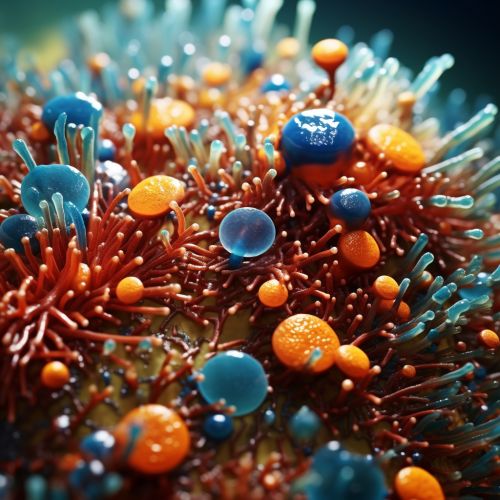Acidophile
Introduction
Acidophiles are organisms that thrive in highly acidic environments, typically with a pH of 3 or below. These organisms are found in various domains of life, including Archaea, Bacteria, and Eukarya. Acidophiles have evolved a variety of mechanisms to survive and grow in these extreme conditions, including adaptations in their cell membranes, metabolic pathways, and DNA repair mechanisms.


Classification and Distribution
Acidophiles are classified based on their optimal pH for growth. Obligate acidophiles require an acidic environment for growth, while facultative acidophiles can tolerate a wider range of pH levels. Acidophiles are found in various environments around the world, including volcanic springs, acid mine drainage, and acidic soils. Some acidophiles, such as the bacterium Thiobacillus, are also chemolithotrophs, obtaining energy by oxidizing inorganic substances.
Physiological Adaptations
Acidophiles have developed several adaptations to survive in acidic environments. These include changes in their cell membranes to prevent the influx of protons, the use of antiporters to pump protons out of the cell, and the production of acid-resistant enzymes. Some acidophiles, such as the archaeon Picrophilus, can even grow at a pH below zero, the lowest known limit for life.
Metabolic Adaptations
Acidophiles have also adapted their metabolic pathways to function optimally in acidic conditions. For example, many acidophiles use the Calvin cycle for carbon fixation, which is more efficient under acidic conditions. Some acidophiles also use sulfur or iron as energy sources, which are abundant in acidic environments.
DNA Repair Mechanisms
Acidic environments can cause damage to DNA, so acidophiles have evolved mechanisms to repair this damage. These include the use of specialized DNA repair enzymes and the production of protective proteins that bind to DNA and prevent damage.
Industrial Applications
Acidophiles have a number of industrial applications, particularly in the field of bioremediation. For example, acidophiles can be used to clean up acid mine drainage, a major environmental problem. Acidophiles are also used in the mining industry for bioleaching, a process that uses bacteria to extract metals from ores.
Research and Future Directions
Research into acidophiles continues to uncover new species and novel adaptations to life in acidic environments. This research has potential applications in various fields, including environmental science, biotechnology, and astrobiology. Understanding how acidophiles survive and thrive in extreme conditions could also provide insights into the limits of life on Earth and the potential for life on other planets.
